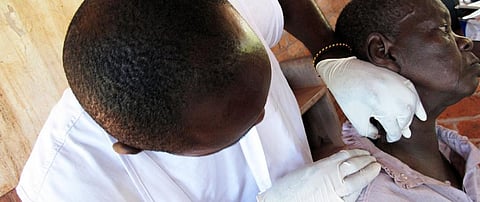

Togo has become the first country in Africa to eliminate human African Trypanosomiasis or sleeping sickness, a disease caused by parasites transmitted through infected tsetse flies. The World Health Organization (WHO) August 27, 2020 certified so, after the country applied for it in 2018.
Sleeping sickness is currently found in 36 sub-Saharan African countries, according to the WHO. If untreated, it can become fatal.
Togo did not report any cases in the past 10 years. The west African country managed to achieve this after more than two decades of sustained political commitment, surveillance and screening of cases, according to the WHO.
The country’s public health officials started implementing control measures from 2000. In 2011, it established surveillance sites at hospitals in Mango and Tchamba cities, covering the main areas at risk from the disease.
Public health officials maintained heightened disease surveillance in endemic and at-risk areas after this. Global collaboration led by the WHO supported national efforts by facilitating donation of medicines and resources from pharmaceutical companies as well.
This helped strengthen local capacity and ensure sustained availability of tools required to control the disease, said Matshidiso Moeti, WHO’s regional director for Africa. “Togo is a pathfinder in eliminating sleeping sickness, a disease that threatened millions of Africans,” she said.
Five more countries — Benin, Burkina Faso, Cameroon, Cote d’Ivoire and Ghana — have applied for WHO certification as well. Benin and Burkina Faso have not reported any sleeping sickness cases since 2001. Except for one case in 2013, Ghana did not report any more cases since 2001.
WHO, however, warned Togo to continue surveillance of the disease to avoid resurgence because its neighbouring countries had not curbed the disease yet.
DRC, other endemic countries can learn from Togo
The Democratic Republic of Congo (DRC) shared 70 per cent of the burden of sleeping sickness, followed by the Central African Republic (9.9 per cent) and Guinea (7.9 per cent), according to the latest WHO estimates.
WHO and its partners aim to eliminate the disease from all endemic countries by 2030. Eliminating sleeping sickness, however, will require a serious commitment of endemic countries, donors and integrating control and surveillance activities into their regular health systems, the WHO said.
These efforts need to be supported by improved tools, innovative disease control approaches and effective coordination of efforts, it added. Togo’s experience with the disease, thus, must be taken into account by the DRC and other endemic countries as well.
Dip in cases across Africa
In 1995, 60 million people in Africa were at risk with an estimated 300,000 new cases per year and about 25,000 cases diagnosed and treated, the WHO said in a statement. The continent recorded a consistent decrease in the number of new reported cases since then, the WHO added.
In 2004, the number of new reported cases fell to 17,616. In 2009, the number of new cases reported dipped below the 10,000-mark (9,878) for the first time in 50 years, with the estimated number of actual cases at 30,000.
This decreasing trend continued and, in 2014, only 3,796 cases were reported, with less than 15,000 estimated cases across the continent.
New cases decreased by 97% in 2019
There are two types of sleeping sickness. The first type occurs due to the Trypanosoma brucei gambiense parasite found in 24 countries in west and central Africa. It caused more than 88 per cent of reported cases of sleeping sickness in 2019, according to updated estimates made available by the WHO.
The second type is due to the Trypanosoma brucei rhodesiense parasite found in 13 countries in eastern and southern Africa. This type accounted for the remaining 12 per cent of reported cases in 2019.
Between 1999 and 2019, the reported number of new cases of the chronic form of human African Trypanosomiasis fell to 864 cases from 27,862, a 97 per cent decrease, showed WHO data.
The number of newly reported cases of the acute form of human African Trypanosomiasis (from the Trypanosoma brucei rhodesiense parasite) fell by 81 per cent to 116 from 619 in the same period.